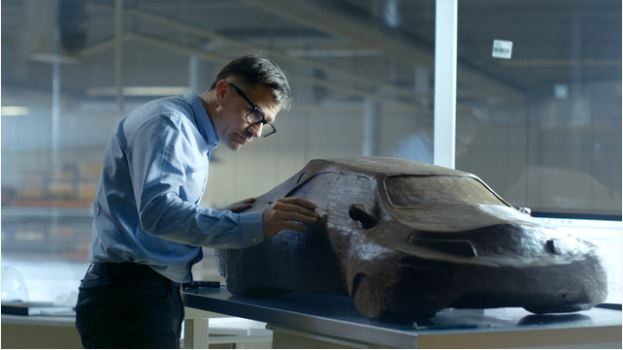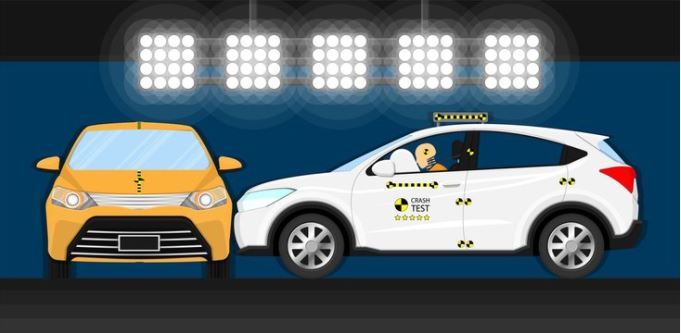What is Build
Quality of Cars
Hi All,
Welcome to my blogs. Now a day’s people often talk about the build quality of cars which was not the case few years back. Question is do we really know what is build quality for Cars. Build quality is not one metric or factor as a point of considering whereas it comprises multiple metric, factor and key components as a whole. There are several components with which a car is been built so one components can’t be a deciding factor. When cars were first built, the construction quality of cars was different than after half a century and much more distinct after a century. There is been huge difference in cars manufacturing processes when they were invented and in this generation as there are many improvements and technologies development happen over the time. Build Quality of cars is very vast topic and can have an insight of all components and won’t be able to cover all but let’s through some light and understand some of the key components of car building which plays an important role in build quality.
Information
Gathering
Information gathering is the first and most important step in any
form of creation. Good information is needed to have good design and it is
required at every stage of build process. Automobile industry is one of the
biggest sectors which contributes immensely in the global economy with the huge
amount of Rs 10,000 Crores or $ 4 trillion every year. A very large amount of
investment is done in RND when there is a new product been made, thus in order
to increase the success rate of product customer requirements plays a crucial
role as a part of information gathering.
Designing of
Cars
Designing cars is another most important step in car manufacturing.
Automotive Design is the unique process of developing visual appearance,
components and vehicle ergonomics which also involves engineering, creativity,
business insight and safety. Designing and development of vehicle is typically
done by large team from different disciplines such as automotive engineers,
component designers, technology specialists etc. Design team is further
bifurcated as Exterior design, Interior design, Color and Trim design and Graphic
design.
Exterior Design
Team: - This team is responsible for the exteriors of the vehicle such as
shape, proportions, surface detailing etc. Exterior designing starts from the
series of manual sketches and digital drawings. More detailed sketches are
performed at the corresponding stage and sufficient layers of higher management
approvals are taken, followed by digital image representation. After more
progressive refinement digital models are been developed along with drawings
and images. The data from this models are used to create clay model which is
the first designed in a computer programs and then carved using the machine and
large amount of clay. The clay model is the most important tools for external
evaluation of vehicle and thus clay model is used throughout the industry.
Interior Design
Team: - This team is responsible for the interior of the vehicle’s shape, dimensions,
surface detailing of instrument panel, seats, door trim panels, headliner,
pillar trims, etc. The focus here is on ergonomics and on passenger
comfort. The method is the same as for exterior design here (sketch, digital
model, and clay model).
Color and Trim
design: - The designer of color and trim team (or color and materials) is
responsible for the research, design, and development of both the colors and
materials used on a vehicle in the interior and exterior. That include
paints, plastics, patterns of fabrics, leather, fiber, carpet, headliner,
wood trim, etc. To give the vehicle a unique experience of an interior
environment, color, contrast, texture, and pattern must be carefully combined.
This team works closely with Exterior and Interior design team. This team draws
inspiration from other area of development such as industrial design, fashion,
Wildlife, home furnishing, architecture and often product design.
Graphic design:
-
For products such as badges, decals, dials, buttons, kick or tread strips,
emblems, the design team also designs graphics.
Engine design:
- Team
is responsible for designing the heat of the vehicle that is Engine which is a
power generating machine. It a design to converts the potential energy of fuel
into heat and that heat is used to generate rotary motion. Engine designers
develops the engine based on the principle such as performance, efficiency,
durability, torque, cost effectiveness, mileage and pollutant emissions norms.
Safety
Safety is which cannot be replaced by any other object. Safety plays
a significant role in the car industry, ensuring that the assembled components
of the body and the frame/ Chassis meet the quality test. There are two major
safety procedures in the automatic industry which are measured as
crashworthiness and penetration resistance.
Crashworthiness is the process
which determines the ability of absorption of the energy by regulated crash
modes and mechanisms.
Penetration
Resistance is concerned
with the complete absorption without allowing fragment penetration.
Car Body Construction
and Materials Used
Car body construction relies on the legal and regulatory concerns of
the manufacturer, and some of the requirements of the consumers. Almost all of
the manufacturers prefer featured material which are light weight, economic,
safety and recyclability. With the evolutions of technology there are
improvement in materials over the years.
Steel: - Steel is the
oldest and the first choice of the material manly because a wide range of
characteristics, such as thermal, chemical or mechanical resistance, production
performance and longevity. This characteristics are involved in the main
elements of material selection, particularly for the body. The change or increase
in the steel industry made the steel thicker, lighter and more rigid than the
previous one. Steel contains not just car bodies, but also engines, wheels,
chassis, and many other elements. Iron and steel are low-cost and create the
essential elements of the structure for the bulk manufacture of cars.
Aluminum: - Aluminum is one another metal widely used in
chassis and body structure. The main reason for using aluminum is that it can
reduce the weight of the vehicle. Its most significant characteristic are low
weight and high energy absorption and precise strength. It is resistant to
corrosion, but it does not replace steel sections because of its poor
flexibility modulus. Therefore, to follow the same mechanical power, certain
components need to be re-engineered.
In the automotive industry, aluminum castings have been used for
pistons, cylinder heads, intake manifolds and transmission. In chassis it is
used as wheels, for brackets, brake components, suspension, steering components
and instrument panels. Aluminum is also used for body structures, finishing and
exterior attachments such as crossbeams, doors or bonnets.
Magnesium: - Magnesium is
another light-weight metal in vehicle manufacturing that is rapidly rising next
to aluminum. Since pure magnesium cannot be used because it has poor mechanical
strength, it must be alloyed with other materials. For room temperature the
most common alloying components are the Mg-Al-Zn group, which incorporates
aluminum, manganese, and zinc.
Car Body
construction Type:-
1) Body
over frame construction: - In this type of construction the frame is the
vehicle foundation. The body and all the major parts of vehicles are attached
to the frame.
Integral or Mono-construction: - This type of construction does
not have a separate frame. It is a stressed hull structure in which structural
support and strength are provided to the whole vehicle from each of the body
sections. The major advantage of mono-construction
vehicle is that they tend to be more tightly constructed because the major
parts are welded together.
Corrosion and
Protection of body Structure
Designing
adhesive joints for fatigue and creep load conditions
Automotive body structure are exposed to wide
variety of fatigue loading conditions (fatigue relates to a failure of body
structure under repeated or fluctuating pressures, stain or stress strengths locations
on structural component) which provide an excellent example of real life where
fatigue and creep analysis plays an important role in car design process and
build quality. The significant advantages that can be accomplished by
integrating adhesives with complementary point joining strategies such as spot
welds or self-piercing rivets are represented by automobile joints.
NVH Refinement
Would you like to site in a car with lots of noise
and vibration. NVH is referred to as Noise, Vibration and Harshness which is the
study and modification of noise and vibration characteristics of vehicle. In simple
terms noise is what you can hear, vibration which you can feel and harshness is
how much of an effect thumps and bumps you can feel in the cabin.
Now you may think what the sources of NVH are:
Aerodynamics- the noise made
by wind from vehicle body, cooling fans of HVAC (heating, ventilation and air
conditioning).
Car manufacturers are spending good amount of money
in reducing NVH level by various means like reducing the source strength,
making the noise source quitter with the help of muffler and improving the
balance of rotating mechanical. With the time and evolution of new technologies
and innovation the NVH levels are refined.
All this above list of factors are key components
and combining them makes a good build quality of car.





























No comments:
Post a Comment
Please do not enter any spam link in the comment box.